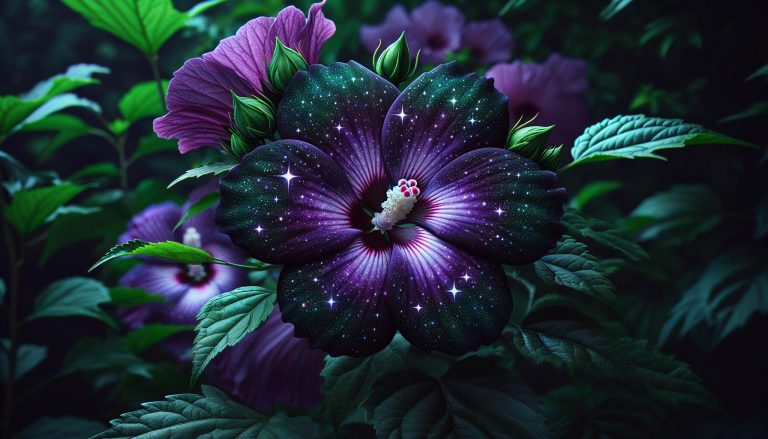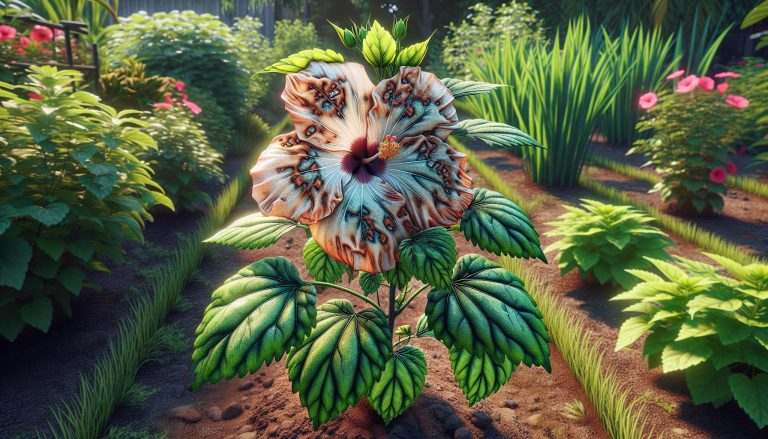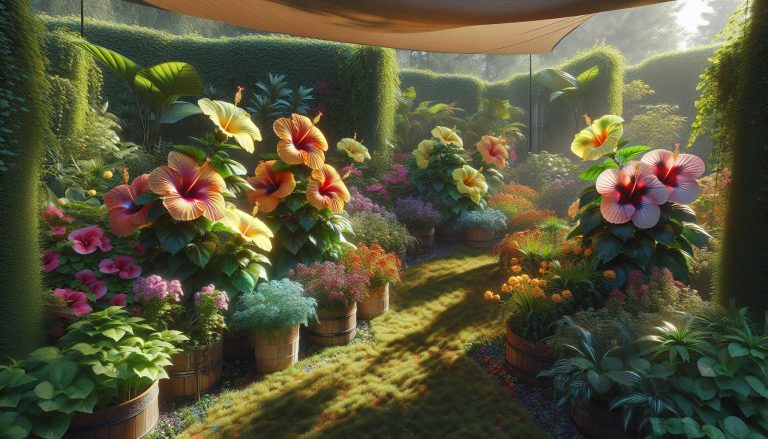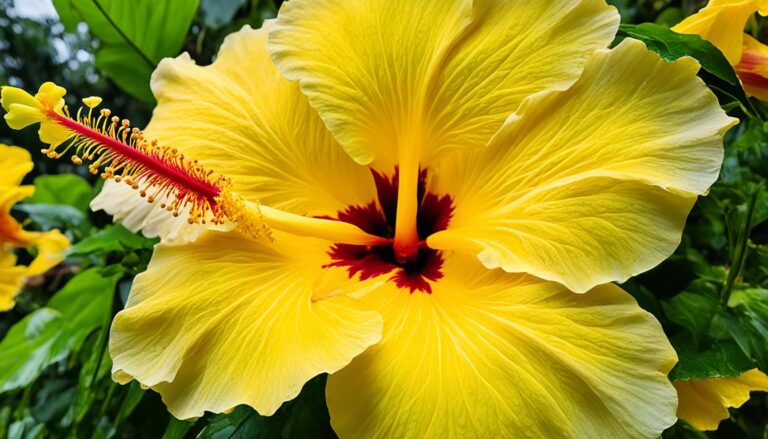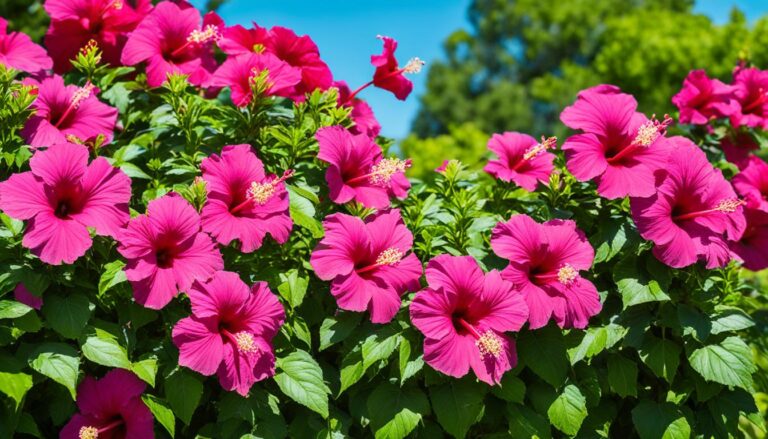Swamp Hibiscus: Growing Guide for Vibrant Wetland Blooms in Your Garden
Have you ever stumbled upon a striking red flower while exploring wetlands or marshy areas? Chances are, you’ve encountered the magnificent swamp hibiscus. As an avid gardener and plant enthusiast, I’ve always been captivated by this stunning native perennial.
Swamp hibiscus, also known as Hibiscus coccineus, is a showstopper in any landscape. With its large, scarlet blooms and unique star-shaped leaves, it’s no wonder this plant has gained popularity among gardeners and nature lovers alike. But did you know that beyond its beauty, swamp hibiscus plays a crucial role in wetland ecosystems? In this article, I’ll dive into the fascinating world of swamp hibiscus, exploring its characteristics, habitat, and the best ways to cultivate this eye-catching plant in your own garden.
What Is Swamp Hibiscus?
Swamp hibiscus (Hibiscus coccineus) is a striking perennial native to wetlands in the southeastern United States. Its vibrant red flowers and star-shaped leaves make it a standout in both wild and cultivated settings.
Scientific Classification
Swamp hibiscus belongs to the Malvaceae family, which includes other well-known plants like okra and cotton. Here’s a breakdown of its scientific classification:
| Rank | Classification |
|---|---|
| Kingdom | Plantae |
| Order | Malvales |
| Family | Malvaceae |
| Genus | Hibiscus |
| Species | H. coccineus |
This classification places swamp hibiscus among its close relatives, sharing similar characteristics with other hibiscus species. However, its adaptation to wetland environments sets it apart from many of its cousins.
Native Habitat
Swamp hibiscus thrives in wet, marshy areas across the southeastern United States. Its natural range includes:
- Coastal plains
- River floodplains
- Swamps
- Wetland margins
These habitats provide the consistently moist soil and full sun that swamp hibiscus prefers. The plant’s ability to tolerate standing water makes it a valuable species in wetland ecosystems, where it helps stabilize soil and provides food and shelter for wildlife.
I’ve seen swamp hibiscus flourishing in Florida’s Everglades, where it adds splashes of vivid red to the lush green landscape. Its presence in these areas highlights its importance in maintaining biodiversity and supporting local wildlife populations.
Physical Characteristics of Swamp Hibiscus
Swamp hibiscus boasts striking features that set it apart in wetland environments. Its distinct physical attributes contribute to its popularity among gardeners and its crucial role in ecosystems.
Flowers and Blooming Season
Swamp hibiscus flowers are a sight to behold. The blooms are:
- Large, measuring 6-8 inches in diameter
- Vibrant scarlet red, earning the plant its nickname “Scarlet Rose Mallow”
- Composed of 5 overlapping petals, forming a shallow cup shape
- Equipped with a prominent central column of stamens and pistils
The blooming season typically runs from mid-summer to early fall, with peak flowering in July and August. During this time, the plant produces a succession of blooms, each lasting only a day but quickly replaced by new ones.
| Blooming Characteristic | Details |
|---|---|
| Flower Size | 6-8 inches |
| Color | Scarlet red |
| Blooming Season | Mid-summer to early fall |
| Peak Flowering | July-August |
| Bloom Duration | 1 day per flower |
Leaves and Stems
The foliage of swamp hibiscus is equally impressive:
- Leaves are palmate, deeply lobed with 3-7 segments
- Each leaf segment is lance-shaped with serrated edges
- Foliage color ranges from deep green to reddish-green
- Leaf size varies from 4-8 inches across
Stems of the swamp hibiscus are:
- Sturdy and herbaceous
- Green to reddish-green in color
- Can reach heights of 4-7 feet
- Branching, giving the plant a bushy appearance
The plant’s overall structure is upright and vase-shaped, making it an excellent vertical accent in gardens or natural settings. Its robust stems and large leaves contribute to its ability to thrive in wet conditions, effectively anchoring the plant in marshy soils.
Growing Swamp Hibiscus
Swamp hibiscus thrives in specific conditions that mimic its natural wetland habitat. With the right soil, sunlight, and water, this stunning plant can flourish in your garden.
Ideal Soil Conditions
Swamp hibiscus prefers rich, moist soil with good drainage. Here’s what you need to know:
- Soil pH: Aim for slightly acidic to neutral (6.0-7.0)
- Soil type: Loamy or clay soils work best
- Organic matter: Add compost to improve soil structure and nutrition
- Drainage: Ensure soil is consistently moist but not waterlogged
To prepare the soil:
- Test pH and amend if necessary
- Mix in organic matter to a depth of 12 inches
- Create a slight depression around the plant to hold water
Sunlight and Water Requirements
Swamp hibiscus thrives in full sun to partial shade and needs consistent moisture. Here’s a breakdown:
Sunlight:
- Full sun (6+ hours daily): Ideal for maximum blooms
- Partial shade (4-6 hours): Acceptable, may reduce flowering
Water:
- Keep soil consistently moist
- Water deeply 2-3 times per week
- Increase watering during hot, dry spells
- Reduce in winter when plant is dormant
Tip: Mulch around the base to retain moisture and suppress weeds.
Table: Watering Guide
| Season | Frequency | Amount |
|---|---|---|
| Spring | 2-3x/week | 1-2 inches |
| Summer | 3-4x/week | 2-3 inches |
| Fall | 1-2x/week | 1 inch |
| Winter | As needed | Minimal |
Remember, swamp hibiscus is adaptable. I’ve seen it thrive in various conditions, but maintaining consistent moisture is key to robust growth and abundant blooms.
Benefits of Planting Swamp Hibiscus
Swamp hibiscus offers a myriad of advantages for gardeners and ecosystems alike. This stunning native plant not only adds beauty to landscapes but also provides crucial ecological benefits.
Ecological Value
Swamp hibiscus plays a vital role in wetland ecosystems:
- Soil stabilization: Its extensive root system prevents erosion in waterlogged areas.
- Wildlife support: The plant attracts pollinators like bees, butterflies, and hummingbirds.
- Habitat creation: It provides shelter and nesting sites for various bird species.
- Water filtration: Swamp hibiscus helps purify water by absorbing excess nutrients and pollutants.
Landscaping Uses
Swamp hibiscus enhances gardens and landscapes in several ways:
- Focal point: Its large, vibrant flowers create a striking visual impact.
- Water features: It’s perfect for pond edges, rain gardens, and bog gardens.
- Natural screening: The tall stems offer privacy when planted in groups.
- Low-maintenance beauty: Once established, it requires minimal care.
I’ve found that incorporating swamp hibiscus into garden designs adds a touch of wildness and elegance. Its versatility allows for creative placement in various settings, from formal gardens to naturalistic landscapes.
Common Pests and Diseases
Swamp hibiscus, while generally robust, can face challenges from pests and diseases. Understanding these issues is crucial for maintaining healthy plants. Here’s what you need to know about common problems and how to address them.
Prevention and Treatment
Preventing pest infestations and diseases is key to keeping swamp hibiscus thriving. Here are some effective strategies:
- Maintain proper spacing: Allow adequate air circulation between plants to reduce fungal growth.
- Water correctly: Avoid overhead watering, which can promote leaf diseases. Water at the base of the plant instead.
- Prune regularly: Remove dead or diseased foliage to prevent spread of pathogens.
- Use organic mulch: Apply a 2-3 inch layer around the base to retain moisture and suppress weeds.
- Encourage beneficial insects: Plant companion flowers to attract natural predators of harmful pests.
For treatment, consider these options:
- Insecticidal soaps: Effective against aphids and whiteflies
- Neem oil: Controls various pests and fungal diseases
- Bacillus thuringiensis (Bt): Targets caterpillars without harming beneficial insects
In severe cases, consult a local extension office for specific treatment recommendations. Remember, early detection and prompt action are crucial in managing pests and diseases effectively.
Propagation Methods for Swamp Hibiscus
Propagating swamp hibiscus is a rewarding process that expands your garden’s beauty. I’ve found several effective methods to multiply these stunning plants:
Seed Propagation
Seed propagation is a cost-effective way to grow swamp hibiscus:
- Collect seeds from mature seed pods in fall
- Scarify seeds by gently rubbing with sandpaper
- Soak seeds in warm water for 24 hours
- Plant in moist, well-draining soil mix
- Keep soil consistently moist
- Provide bright, indirect light
- Expect germination in 2-3 weeks
Stem Cuttings
Stem cuttings offer a faster route to mature plants:
- Take 4-6 inch cuttings from healthy stems in spring or summer
- Remove lower leaves, leaving 2-3 at the top
- Dip cut end in rooting hormone
- Plant in a mix of peat moss and perlite
- Cover with a clear plastic bag to maintain humidity
- Place in bright, indirect light
- Roots should develop in 3-4 weeks
Division
Division works well for established plants:
- Dig up the entire plant in early spring
- Gently separate the root ball into sections
- Ensure each section has healthy roots and stems
- Replant divisions immediately
- Water thoroughly and provide shade for a few days
Layering
Layering is a low-risk method:
- Choose a flexible, low-growing stem
- Make a small incision on the underside
- Bend the stem to the ground and cover with soil
- Secure with a U-shaped pin or small rock
- Keep the soil moist
- Once roots form, cut the new plant from the parent
Each method has its advantages. Seeds offer genetic diversity, cuttings produce clones, division rejuvenates older plants, and layering is gentle on the parent plant. Choose the method that best suits your gardening goals and experience level.
Conclusion
Swamp hibiscus is a stunning addition to any garden with its vibrant flowers and ecological benefits. I’ve shared various propagation methods to help you expand your collection of these beautiful plants. Whether you choose seeds stem cuttings division or layering you’ll find a technique that suits your gardening style. By incorporating swamp hibiscus into your landscape you’re not only enhancing its visual appeal but also supporting local wildlife and pollinators. With proper care and attention this adaptable plant will thrive bringing joy to both you and the ecosystem around you.


